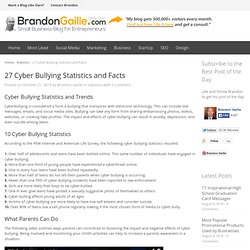

Videos, Teaching Strategies And Lesson Plans For Teachers: Teaching Channel. Contronyms: Negatives Without Positives. Suffixes Sometimes antonyms are formed by appending the suffixes -ful and -less onto English words, as with joyful and joyless.

But sometimes one is an English word and the other isn't. For example, reckless is an English word, and reckful is not. Other times, one is more commonly used than the other: ruthless and ruthful are both legitimate English words, but the former is used far more frequently than the latter. Special Cases An interesting special case is indefatigable, whose antonym is not defatigable but rather fatigable. The antonym of the verb incline is disincline, which is arguably not a double negative but in any case looks like one. The word inflammable is another interesting special case. Bullying. Cyber safety. Bullying videos. Lesson 1. Bullying videos. Images (1) Animación contra el Bullying. ImagesCAD7E3OE. Top ten teens prevent. Leaders Guide to Words Wound3. 27 Cyber Bullying Statistics and Facts. Cyber Bullying Statistics and Trends Cyberbullying is considered a form a bullying that transpires with electronic technology.

This can include text messages, emails, and social media sites. Bullying can take any form from sharing embarrassing photos, videos, websites, or creating fake profiles. The impact and effects of cyber bullying can result in anxiety, depression, and even suicide among teens. 10 Cyber Bullying Statistics According to the PEW Internet and American Life Survey, the following cyber bullying statistics resulted. 1. What Parents Can Do The following video outlines ways parents can contribute to lessening the impact and negative effects of cyber bullying. Parent’s Involvement in Cyber Bullying Based on the American Osteopathic Association, parent’s involvement with cyber bullying are outlined below.
Reasons for Cyber Bullying Based on the Teen Online & Wireless Safety Survey, the following statistics illustrate the reasoning’s behind teens engaging in cyber bullying. Parent's Guide to Social Media - Babble. I finally joined Instagram, and then I fell down a rabbit hold of tween social media usage.

Some of what I found was innocuous, some was not. As soon as I joined, the app used my phone’s contact list to tell me who I might want to follow. KEEP CALM AND THINK BEFORE YOU POST! Poster. Statistics on Bullying, Cyberbullying and Suicide. Traditional Bullying Nearly 1 in 3 students (27.8%) report being bullied during the school year (National Center for Educational Statistics, 2013).

The National Crime Victimization Survey of the 2011 school year found that 27.8% of students (ages12-18) reported being bullied at school, while 9% reported being cyber-bullied anywhere (NCES, 2013). Of the students that reported being bullied in the National Crime Victimization Survey (NCES, 2013): 64.5% said it was once or twice in the school year18.5% said once or twice a month9.2% said once or twice a week7.8% said almost every day Of the students in the National Crime Victimization Survey (NCES, 2013): 17.6% reported being made fun of, called names or insulted18.3% had rumors spread about them5.0% were threatened with harm7.9% were pushed, shoved, tripped, or spit on3.3% were tried to make do things they did not want to do5.5% were excluded from activities on purpose2.8% had their property destroyed on purpose.
Facts About Bullying. Reporters and other content creators need the facts quickly.

This section pulls together fundamental information about bullying you can use to build your pieces, including: This page was last reviewed on 10-14-2014. Definition In 2014, the Centers for Disease Control and Department of Education released the first federal uniform definition of bullying for research and surveillance.1 The core elements of the definition include: unwanted aggressive behavior; observed or perceived power imbalance; and repetition of behaviors or high likelihood of repetition. There are many different modes and types of bullying. Bullying can happen in any number of places, contexts, or locations. Some bullying actions can fall into criminal categories, such as harassment, hazing, or assault. Journalists and other content creators can use this definition to determine whether an incident they are covering is actually bullying.
State of the Science Yet many questions remain. Statistics National Statistics Laws. THE CYBER BULLYING VIRUS. Teens. Cyberbully PSA - Talent Show. Online Safety ~ Cyberbullying. Cyberbullying Resources.